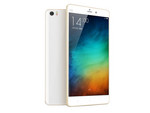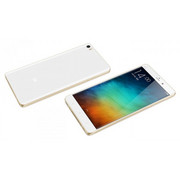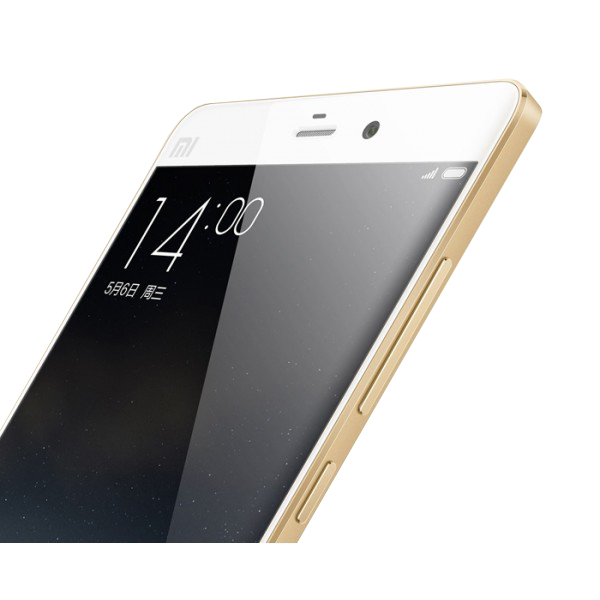Xiaomi Mi Note Pro
Ausstattung / Datenblatt

Preisvergleich
Durchschnitt von 3 Bewertungen (aus 6 Tests)
Testberichte für das Xiaomi Mi Note Pro
Quelle: Zdnet.com
 EN→DE Archive.org version
EN→DE Archive.org versionMy only other niggles with the Pro are a keyboard backlight that's either on or off with no adjustment for duration or brightness, a rather mundane one-megapixel webcam, and cooling fans that when working full-tilt can be a little intrusive.
Einzeltest, online verfügbar, Kurz, Datum: 01.02.2018
Bewertung: Gesamt: 79%
Quelle: AnandTech
 EN→DE Archive.org version
EN→DE Archive.org versionAs our first Xiaomi phone ever to be reviewed, there are a lot of thoughts to be had on this phone, more than a usual review. However, in order to discuss them we need to start by talking about what we’ve learned throughout the testing process. Probably the best place to start is design. Xiaomi is clearly capable of creating a phone that is well designed, and it shows with the Mi Note line.
Einzeltest, online verfügbar, Sehr Lang, Datum: 11.09.2015
Quelle: Phone Arena
 EN→DE Archive.org version
EN→DE Archive.org versionThe specs are mighty fine with this, we’re not denying that, but it still performs slightly behind the Note5 in many areas. Furthermore, it doesn’t have the nearly the same amount of diversified features that cater to power users, so its particular user experience might be thought of as limiting to some folks. The low cost and drool worthy specs sheet give the Xiaomi Mi Note Pro a lot of credibility in generating attention, however, it still lacks the solid performance and meaningful experiences to really give the Note5, as well as some other noteworthy phones in the same caliber, any sort of threat.
Einzeltest, online verfügbar, Sehr Lang, Datum: 11.09.2015
Bewertung: Gesamt: 72%
Quelle: Androidbeat
 EN→DE Archive.org version
EN→DE Archive.org versionAt the end of the day, I can’t see many AndroidBeat readers opting to import one of these, though. There’s nothing intrinsically wrong with the Mi Note Pro, in some ways it’s an Android powerhouse. But at the same time, you can get more functions, more flexibility, more familiarity, and more manufacturer and retailer support from a vanilla Galaxy Note 4 for roughly the same outlay, now at summer 2015 pricing in most of the world.
Einzeltest, online verfügbar, Kurz, Datum: 13.07.2015
Quelle: Android Authority
 EN→DE Archive.org version
EN→DE Archive.org versionSo there you have it for this in-depth look at the Xiaomi Mi Note Pro! Xiaomi claims that the Mi Note Pro is the best smartphone in the world, and while that statement is certainly subjective, the device does manage to impress in key aspects, with regards to build quality, performance, the camera, software, and the overall user experience. The Xiaomi Mi Note Pro is definitely a worthy competitor to the current crop of Android flagships, and it is actually quite a shame that, at least for now, more people won’t be able to get their hands on it.
Einzeltest, online verfügbar, Sehr Lang, Datum: 09.06.2015
Bewertung: Gesamt: 87%
Quelle: HDblog.it
 IT→DE Archive.org version
IT→DE Archive.org versionPositive: Elegant design; compact size; fast system; decent speakers; nice performance; good cooling system. Negative: Poor display; mediocre connectivity.
Einzeltest, online verfügbar, Lang, Datum: 05.10.2017
Kommentar
Modell: Trotz seines Namens handelt es sich beim Xiaomi Mi Note tatsächlich um ein Smartphone und nicht um ein Notepad. Die chinesische Marke Xiaomi wird schnell über die traditionelleren taiwanesischen und koreanischen Marken hinaus bekannt. Als Flaggschiff-Phone ist es hauptsächliche aus Corning Gorilla Glass und Kunststoff als Rückgrat mit einem Metallrahmen und goldenen Highlights. Das Phone ist entweder mit schwarzem oder weißen Farbschema erhältlich. Das schlanke, abgerundete Smartphone ist nur 7 mm dick und wiegt 161 g und ist damit wirklich leicht und einfach zu handhaben. Sein 5,7 Zoll großer Bildschirm verfügt über eine Auflösung von 1440 x 2560 Pixeln. Das ergibt eine Pixeldichte von zirka 515 ppi. Der Bildschirm wird durch Corning Gorilla Glass 3 geschützt.
Die sehr hohe Pixeldichte sorgt für die hellsten, schärfsten und brilliantesten Bilder, die man sich von einem Phone erwarten kann. Das Phone läuft unter Android 5.0.1 OS, auch Lollipop OS genannt. Der Prozessor ist entweder ein 1.5 GHz Cortex-A53 Quad-Core-Prozessor oder ein 2 GHz Cortex A 57 Quad-Core-Prozessor, jeweils in Kombination mit einer Adreno 430 GPU. Zudem gibt es 4 GB RAM und 64 GB Speicher. Allerdings kann der Speicher leider nicht erweitert werden, da es keinen Speicherkartenslot gibt. Es gibt zwei Kameras, eine 13-Kamera an der Rückseite und eine 4-MP-Frontkamera. Über das Angebot von Xiaomi wird man definitiv eine lange Zeit sprechen.
Qualcomm Adreno 430: Grafikchip für Smartphones und Tablets, integriert im Qualcomm Snapdragon 810 SoC.
Einige nicht anspruchsvolle aktuelle Spiele können mit geringen Details noch flüssig gespielt werden. Für Office und Video natürlich ausreichende Leistungsreserven.
» Weitere Informationen gibt es in unserem Notebook-Grafikkartenvergleich und der Benchmarkliste.
810 MSM8994: High-End ARM-SoC mit insgesamt 8 CPU-Kernen (4x Cortex-A57, 4x Cortex-A53) und einer Adreno 430 GPU. Wird in einem 20-Nanometer-Prozess gefertigt.» Weitere Infos gibt es in unserem Prozessorvergleich Vergleich mobiler Prozessoren und der Prozessoren Benchmarkliste .
5.70": Es handelt sich um ein sehr kleines Display-Format für Smartphones. Man sollte keinesfalls fehlsichtig sein und man wird generell sehr wenig am Bildschirm sehen und nur eine kleine Auflösung zur Verfügung haben. Dafür sollte das Gerät sehr klein und handlich sein.» Prüfen Sie in unserer DPI Liste, welche Displays wie fein aufgelöst sind.
0.161 kg:
In diese Gewichtsklasse fallen die meisten Smartphones und nur vereinzelt Tablets. Nur wenige Smartphones sind schwerer und eher als Tablets anzusehen.
Xiaomi:
Die 2010 gegründete Xiaomi Corporation ist ein chinesisches multinationales Elektronikunternehmen und produziert Unterhaltungselektronik und verwandte Produkte, darunter Smartphones, Fernsehgeräte, Fitnessbänder, Power Banks, Kopfhörer, intelligente Geräte und Zubehör. Xiaomi bietet seine Produkte unter den Marken Mi, Redmi und POCO an.
79.33%: Weltbewegend ist diese Bewertung nicht. Diese Bewertung muss man eigentlich als unterdurchschnittlich ansehen, denn es gibt etwa ebenso mehr Geräte mit schlechtere Beurteilungen als Besseren. Eine Kaufempfehlung kann man nur mit viel Wohlwollen darin sehen, es sei denn es handelt sich um Websites, die generell streng urteilen.
» Lesen Sie auch unsere Notebook-Kaufberatung.


 Deutsch
Deutsch English
English Español
Español Français
Français Italiano
Italiano Nederlands
Nederlands Polski
Polski Português
Português Русский
Русский Türkçe
Türkçe Svenska
Svenska Chinese
Chinese Magyar
Magyar
